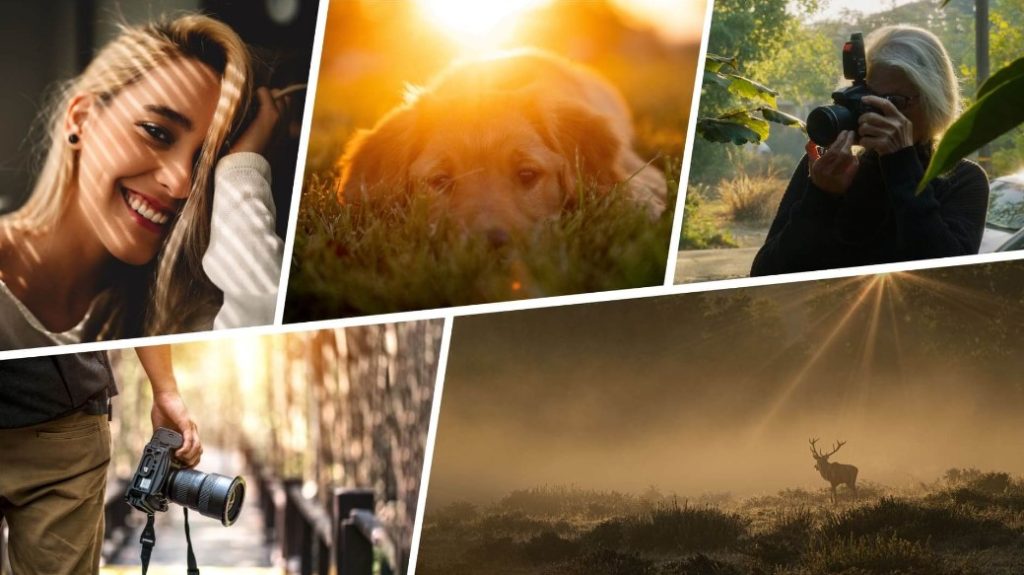
In the realm of photography, few elements wield as much power and enchantment as natural lighting. The sun, the ultimate source of light, gifts photographers with an ever-changing palette of colors, shadows, and textures, creating mesmerizing compositions that breathe life into their subjects. Mastering the art of capturing natural light can elevate your photography to new heights, enabling you to tell captivating stories with your lens. Along with Joe Cianciotto, we delve into the beauty and techniques of harnessing the magic of natural lighting in photography.
Understanding the Different Types of Natural Light
Natural light is dynamic, varying throughout the day and influenced by weather conditions. The two primary types of natural light photographers encounter are harsh light and soft light. Harsh light, typically found during midday, creates strong shadows and high contrast, making it ideal for high-impact, dramatic shots. On the other hand, soft light, often present during the golden hours around sunrise and sunset, bathes the scene in a warm, diffused glow, producing gentle shadows and a serene atmosphere. Knowing how to work with both types of light will allow you to adapt your photography style to different scenarios.
Embracing the Golden Hour
The golden hour, those magical moments shortly after sunrise and before sunset, is a treasured time for photographers. During this time, the sun sits low on the horizon, casting a soft, warm light that brings out stunning colors and adds a touch of magic to your images. The golden hour is perfect for capturing portraits, landscapes, and any subject you want to infuse with a sense of beauty and tranquility.
Taming Harsh Light
While the golden hour is a gift for photographers, shooting in harsh light can be challenging. However, with the right techniques, even harsh light can be harnessed creatively. One way to handle harsh light is to use shadows to your advantage. Play with shadows to add depth and drama to your images. Alternatively, consider using diffusers or reflectors to soften and redirect the harsh light, creating a more flattering look for portraits.
Backlighting for Drama
Backlighting occurs when the main source of light is behind your subject, creating a beautiful glow around them. This technique can add a dreamy and ethereal quality to your photographs, especially when shooting portraits or nature scenes. Be mindful of your exposure settings to retain the details in your subject while capturing the luminous effect of backlighting.
Working with Silhouettes
Silhouettes are a striking and artistic way to utilize natural lighting. By exposing for the background and allowing the subject to appear as a dark silhouette against a bright sky, you can create powerful and evocative images. Silhouettes are particularly effective during sunrise or sunset when the sky bursts with vibrant hues.
Understanding White Balance
The color temperature of natural light changes throughout the day, affecting the overall look of your images. Understanding white balance and how to adjust it can help you maintain the natural colors in your photographs. For example, during the golden hour, the light tends to be warmer, casting a golden hue on your subjects. By adjusting your white balance settings, you can preserve this warmth and create images that accurately reflect the mood of the moment.
Patience and Adaptability
Working with natural light requires patience and adaptability. The sun’s position, cloud cover, and weather conditions can change rapidly, altering the lighting conditions on the spot. Be ready to adjust your settings and compositions accordingly. Waiting for the right moment or returning to a location at different times of the day can yield vastly different results, providing you with a wealth of creative opportunities.
Practicing Observation
Observation is a fundamental skill for a photographer, especially when it comes to natural lighting. Pay attention to how light interacts with your surroundings, how shadows move, and how the quality of light changes over time. Developing a keen eye for these details will help you anticipate and capture those fleeting moments when the light is just right.
Without a doubt, natural lighting is a magnificent gift that bestows photographers with endless possibilities for creativity and storytelling. By understanding the various types of natural light and employing the right techniques, you can harness the magic of light to elevate your photography. Whether you’re capturing a stunning landscape during the golden hour or using shadows to create drama, the interplay of natural light and your subjects will breathe life into your images, creating visual masterpieces that leave a lasting impact on your audience. So, embrace the beauty of natural light, immerse yourself in the world around you, and let the sun’s gentle touch guide your lens toward breathtaking photographs.
